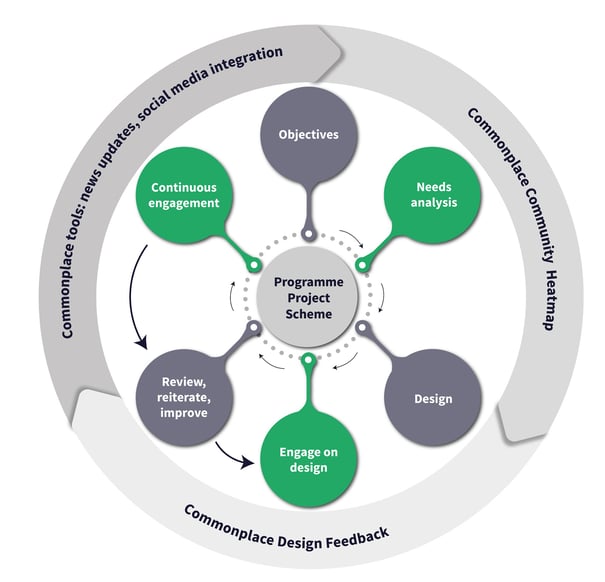Project lifecycle management - the role of engagement

By Steve Rowe | 17/11/20 08:55
2 min read
Public engagement can and should add value throughout the lifetime of a project. Yet, most public engagement in the built environment happens up-front. While initial engagements are valuable and indeed necessary, they are generally done to get through the planning process and little else.
This is in stark contrast to the continuous engagement we are accustomed to in other aspects of our lives. Retailers will keep us informed of new products and regularly update us on the status of our shipments. The current pandemic has cast a spotlight on the value of continuous public health engagement to maintain trust and guide behaviour. Yet in the built environment we treat engagement as a passing but necessary, episode.
Engaging in the 'new normal'
In planning, the pandemic has forced the whole engagement and consultation community to adapt and the tools they use have become predominantly online. Traditional face to face methods have quickly made way for digital methods of engagement; virtual exhibitions, video meetings and interactive websites.
The ‘new normal’ is starting to take shape and it’s abundantly clear that digital engagement is here to stay and is already helping organisations reach much higher volumes of participation amongst a much wider audience. The benefit? The engagement provides far more robust data, upon which decisions can be made.
By involving communities earlier, they become part of the solution, they are bought in and can evangelise the benefits of a development. This is not to say that traditional engagement is dead; far from it. While Commonplace is a supplier of digital engagement services, we advocate a blended approach to engagement and are investing in technologies that emulate traditional interactions such as public meetings and exhibitions.
Why does community engagement stop?
However, once a project is given the legal go-ahead, engagement generally stops and is replaced by operational systems. For example, requesting housing repairs from social housing providers; reporting potholes to the local highways authority, and formal complaints systems. Customer satisfaction surveys are alternatives that organisations try to use as engagement proxies. But often the surveys are too long, have high abandonment rates and people tend to remember and relate the last bad experience they had. Some of these systems and processes are necessary, but continuous engagement with a community will pay far better dividends.
Engagement techniques such as construction feedback, post occupancy feedback or post implementation utilisation reporting done digitally, allow project owners to determine trends and issues and take action before they become a persistent problem. In essence, public opinion is being managed by action rather than public relations.
Engaging from start to finish
Proactivity breeds confidence and trust and saves time and money over the long term. Our approach to lifecycle management is shown below:

Project lifecycle Management - Commonplace
Our approach is based upon early engagement that informs the design phase, starting the co-creation process and developing community buy-in. The design engagement is an iterative process, so that the finished item reflects community needs as far as local constraints - such as budget and space permit. Continuous engagement is the process of obtaining feedback and opinion on the effectiveness of the scheme over its lifetime.
Commonplace has great examples of programme and project lifecycle management. For example, ‘Connecting Leeds’ - this is a major programme of investment in strategic route in and out of Leeds. Commonplace was used in the early design phases and is still used as projects are rolled out on the ground. To this has recently been added engagement on a raft of measures related to Covid-19 and social distancing through the Active Travel Fund. For each of multiple projects, regular updates are posted on the Commonplace websites and alerts are sent to subscribers on Commonplace and through social and traditional media.
Many government-funded schemes have engagement as a key requirement and success in achieving funding awards. Several require multiple phases of engagement and continuous monitoring of interventions. However, irrespective of the sector you work in, continuous engagement through a project’s life cycle is best practice worth adopting.
If you would like to know more how Commonplace can help you with project life cycle management, get in touch with our team to learn more.
.png)
